Have you ever thought about making your own ketchup? It’s delicious! This recipe can be made with tomatoes OR tropical tamarillo. This recipe for canning ketchup is great either way!
I have lots more food preservation recipes here!
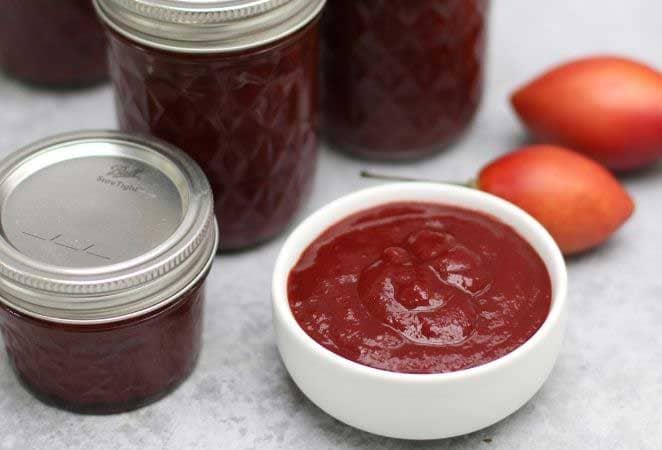
Tamarillo ketchup recipe for canning
One of the big dilemmas of living in Hawaii is that I’m unable to grow tomatoes in the quantity I’d like. Once upon a time I used to preserve ALL of the tomato products we needed. Not so anymore.
But I’ve been experimenting with using tamarillos (aka tree tomatoes) in place of tomatoes in some recipes.
A tamarillo is sweeter and fruitier than a standard tomato but it also has a pungent tang that made me think it could stand in for tomatoes in a ketchup recipe.
I was not wrong!
5 Easy Steps to Transform Your Pantry!
Ready to switch from store bought to homemade? Let me help you make some changes! Grab my FREE five-part guide to getting started.
This tomatillo recipe mimics bottled ketchup pretty well, though it’s slightly less sweet. Commercial ketchup is sweetened pretty heavily!
The Handcrafted Pantry

Ready to DIY your pantry with more wholesome ingredients? Check out my ebook, The Handcrafted Pantry! Filled with delicious recipes for some of your favorite condiments, snacks, and toppings, it’s the guide you need to start skipping packaged products and embrace homemade.
Pulping the tamarillo
Tamarillos have somewhat hard seeds inside, and those need to be removed before making this ketchup recipe. You’ll also need to remove the bitter skins.
Cut tamarillo fruit in half and use a spoon to scoop out the flesh, transferring the fruit into a food mill.
Set the food mill on top of a bowl to capture the strained pulp. When the food mill is full, turn the handle repeatedly until the only thing left in the strainer bowl is a thick paste of seeds.
Alternatively, you can use a chinois. To do that, put the tamarillo pulp in a food processor and pulse several times to break it up. Transfer to a chinois and use the wooden tool to press the pulp out into a bowl.
I’ve done this both ways and feel that I’m able to retrieve more pulp with the food mill.
Once pulped, you can begin making the ketchup right away, or refrigerate the pulp overnight.
Making the tamarillo ketchup
Because you’ll be reducing the fruit pulp to make a thicker product, this recipe can take several hours, start to finish. It’s not hands on time, though.
Start by measuring the de-seeded pulp into a stock pot along with chopped onion and red pepper. Bring to a boil and let cook at a low boil for 30 minutes, stirring occasionally. It will take about 30 minutes to reach a boil, depending on your burner and whether or not you’re starting with refrigerated or room temperature pulp.
Use an immersion blender to finely puree that cooked ingredients, then add the vinegar, sugar, and spices.
Return to a simmer and cook for another 1-1/2 hours or until the ketchup reaches the desired consistency. Be sure to stir often to prevent scorching. You may need to stir more frequently as the sauce thickens.
The foam that rises to the top of the ketchup as it cooks can be skimmed from the pulp to make a nicer looking product. (It’s totally edible, though.)
If you have fresh tomatoes, you can simply substitute tomato pulp for the tamarillos in this recipe. BUT if you do so, you should test the pH of the final product to make sure the acidity level is 4.6 or lower to be safe. (Recommended 4.2 for tropical canners.)
Canning tamarillo ketchup for the pantry
This recipe results in a pH of between 3.0 and 3.5, making it a safe recipe for preserving in a water bath canner. Once processed, the ketchup will be shelf stable.
While this is a fairly large batch to make ketchup for canning a shelf stable product, you could easily halve the recipe and simply keep the ketchup in the fridge for a month or so.
This canning method requires that filled and sealed jars are submerged in water and processed in a boiling water water bath. If you’re new to canning, be sure to read more about the process of canning and canning equipment here.
Follow the step-by-step instructions below to safely can this tamarillo ketchup.
You can also use this unusual fruit to make tamarillo jam!

Homemade Ketchup
Ingredients
- 14 cups tamarillo pulp de-seeded (or crushed tomatoes)
- 1 cup onion chopped
- 1 cup red pepper chopped
- 1 ⅓ cups apple cider vinegar
- 1 ¼ cups sugar
- 2 cinnamon sticks
- 1 teaspoon whole allspice
- ½ teaspoon whole cloves
- 2 bay leaves
- 4 teaspoons sea salt
- 1 teaspoon black pepper finely ground
- 2 teaspoons mustard
Instructions
- Note: some of these steps can/will happen simultaneously
Making the ketchup
- Measure the de-seeded pulp into a stock pot along with chopped onion and red pepper. Bring to a boil and let cook at a low boil for 30 minutes, stirring occasionally. It will take about 30 minutes to reach a boil, depending on your burner and whether or not you're starting with refrigerated or room temperature pulp.14 cups tamarillo pulp, 1 cup onion, 1 cup red pepper
- Tie the cinnamon, allspice, cloves, and bay leaves into a square of cheesecloth.2 cinnamon sticks, 1 teaspoon whole allspice, 1/2 teaspoon whole cloves, 2 bay leaves
- Use an immersion blender to finely puree the cooked ingredients, then add the vinegar, sugar, and spices.1 1/3 cups apple cider vinegar, 1 1/4 cups sugar, 4 teaspoons sea salt, 1 teaspoon black pepper, 2 teaspoons mustard
- Return to a simmer and cook for another 1-1/2 to 2 hours or until the ketchup reaches the desired consistency. Be sure to stir often to prevent scorching. You may need to stir more frequently as the sauce thickens.
- The foam that rises to the top of the ketchup as it cooks can be skimmed from the pulp to make a nicer looking product.
- Remove the cheesecloth bag.
Prepare for canning
- Wash the jars you'll use, making sure each is clean and free of nicks in the rim, which could impede sealing.
- Wash the lids and rings in hot soapy water. (If you're using non-Ball brand lids, prepare as suggested by manufacturer.)
- Place empty jars in a canning pot or large stock pot with enough water to cover by an inch or two, cover pot, and set on high heat. It can take awhile for the water to heat, so get it started before you begin making the recipe.
Canning this recipe
- Remove the empty jars from the canner, draining the water back into the pot.
- Transfer the hot ketchup to canning jars using a ladle and a canning funnel, leaving a 1/2" headspace between the top of the ketchup and the jar rim.
- Wipe the rims thoroughly with a damp cloth. Residue on the jar rim can impair sealing.
- Set a flat lid on each jar as you fill it and screw on a canning band to fingertip tightness.
- Use a jar lifter to transfer the jars into boiling water in the canner. Return water to a boil and process for 20 minutes.
- When time elapses, lift jars from the canner onto a clean towel on a solid surface. Place them where they won't be in a draft or be disturbed for 24 hours. Resist pressing the lids, as you don't want to accidentally push one in and create a false seal.
- Check seals after 24 hours. The lid should be solid; if it flexes, the seal failed. Keep that jar in the fridge and use it first.
- Wash jars and store in a cool, dry, dark place without their canning rings.
Notes
- *If the filled jars will be processed for more than 10 minutes, they don't necessarily need to be sanitized. It also won't hurt them to be sanitized and you may wish to err on the side of caution. Whether or not you opt to sanitize the jars, you should always clean the jars with hot soapy water and rinse well before filling them.
- This recipe results in a pH of between 3.0 and 3.5, making it a safe recipe for preserving in a water bath canner. Once processed, the ketchup will be shelf stable.
- Boiling lids or heating above 180°F as once recommended can damage the sealing compound.

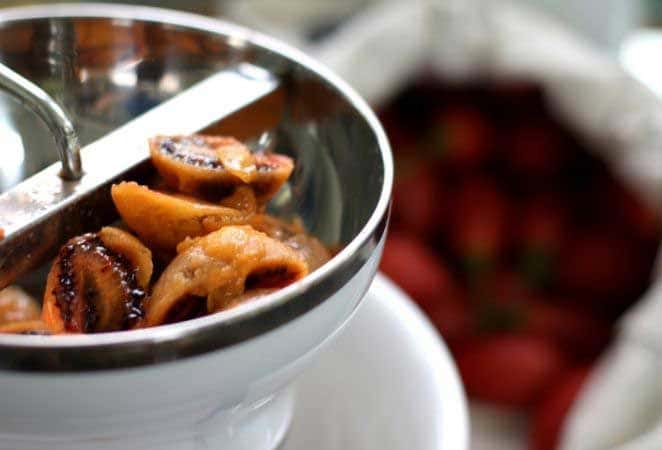
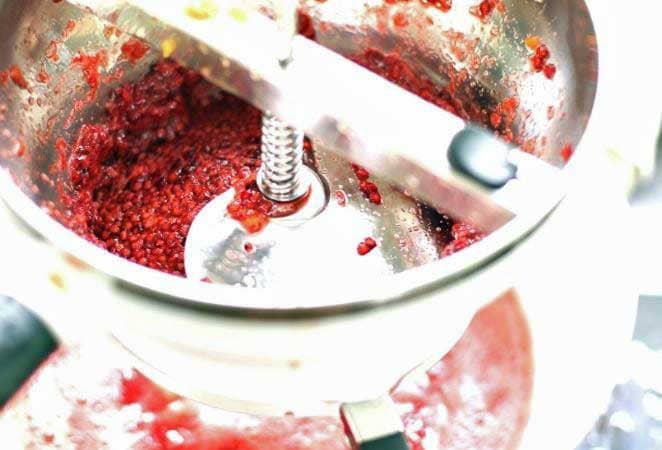
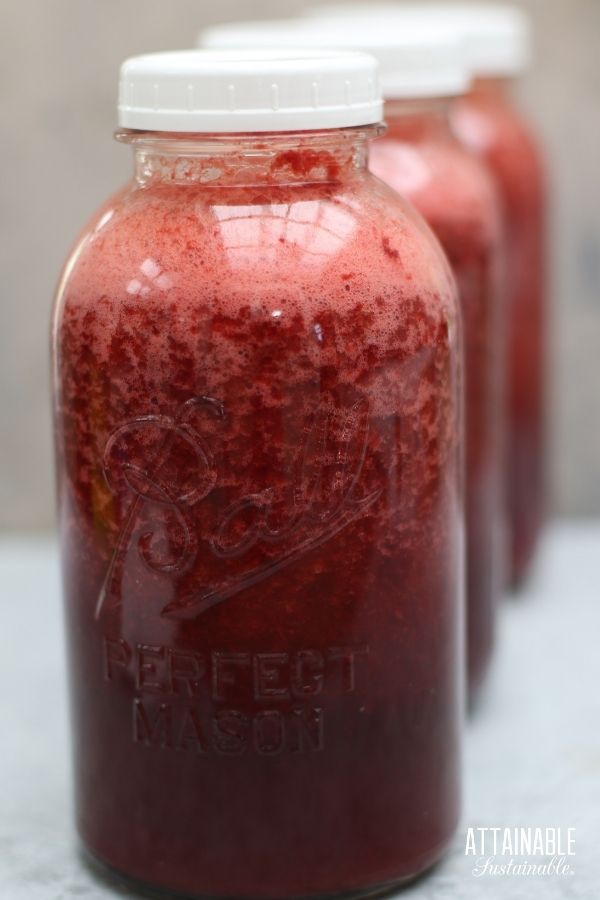
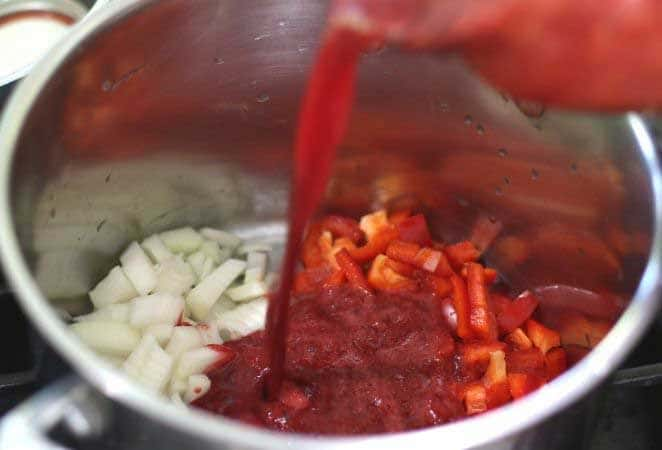
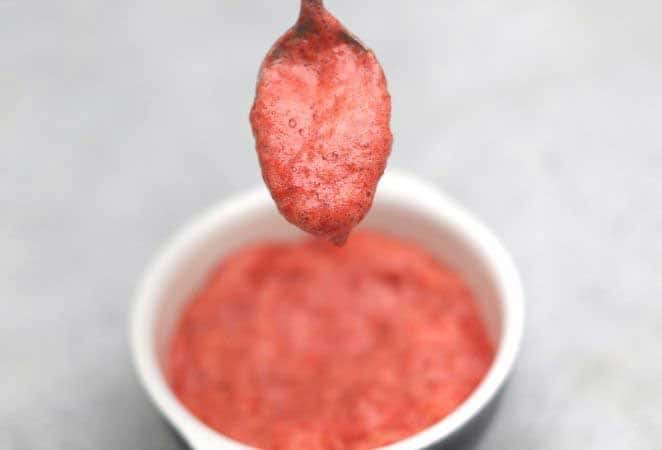
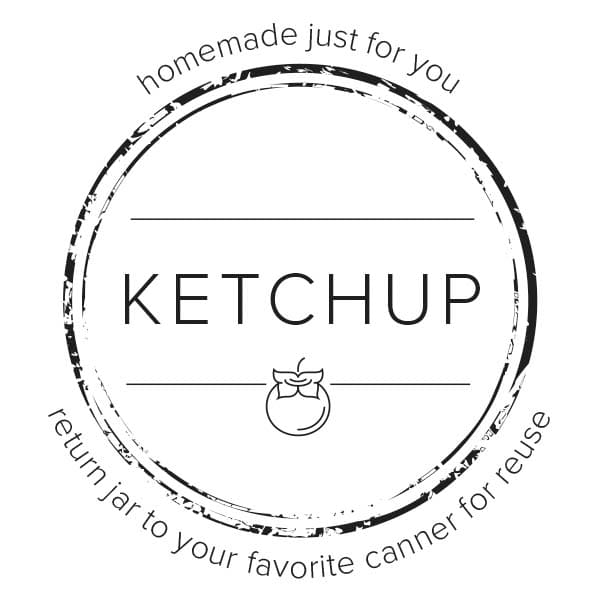
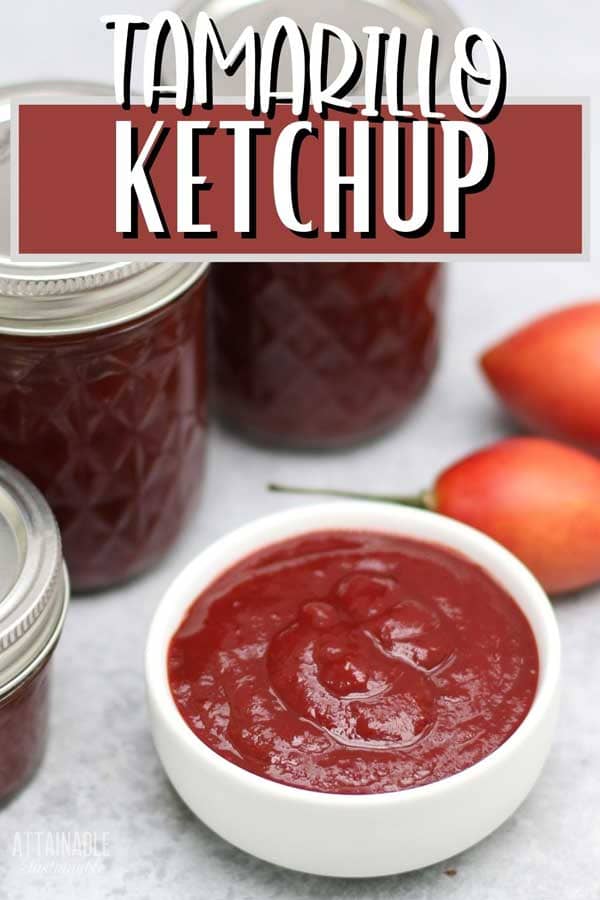





wondering if this can be made without sugar?
The recipe has been tested for canning safety as written. If you wanted to try it and freeze it instead, you could certainly use a sugar substitute.